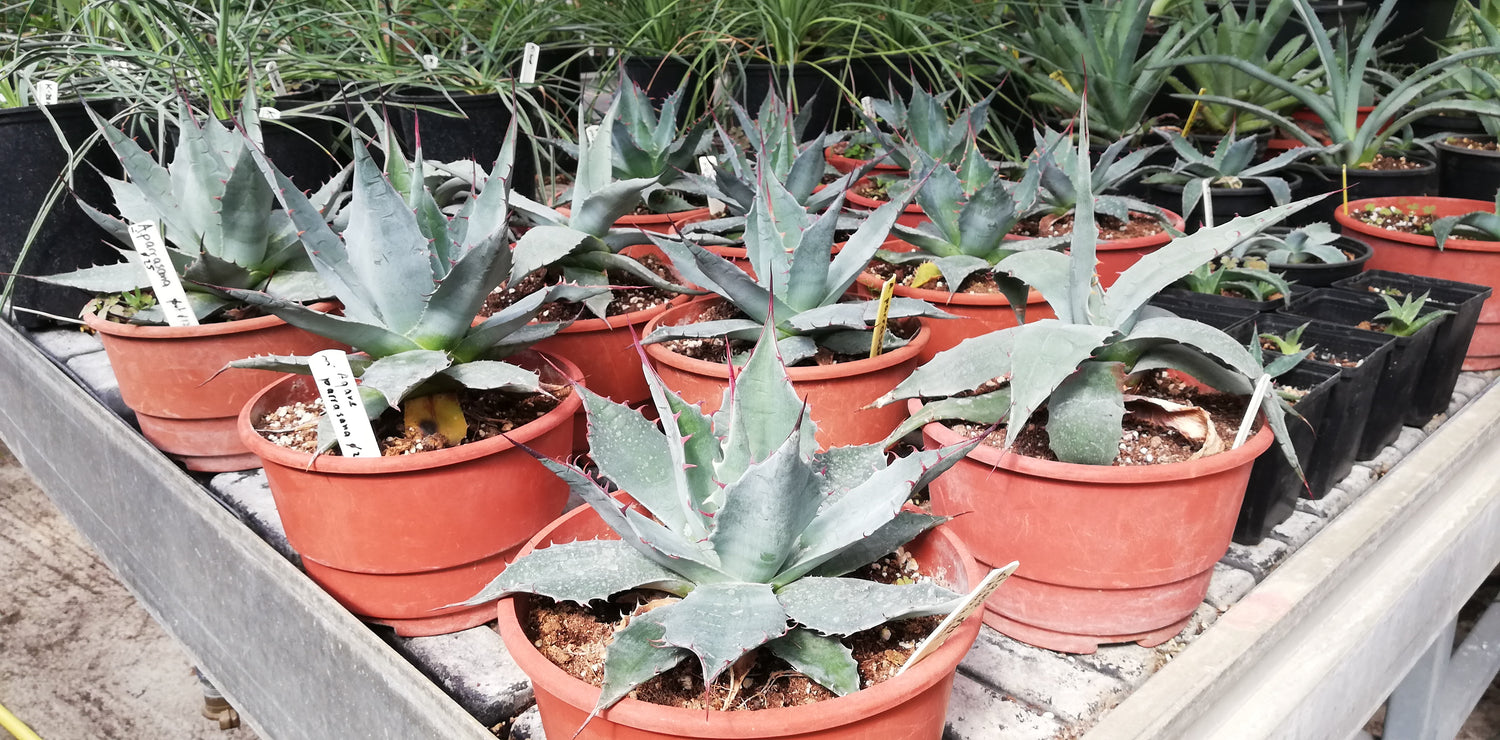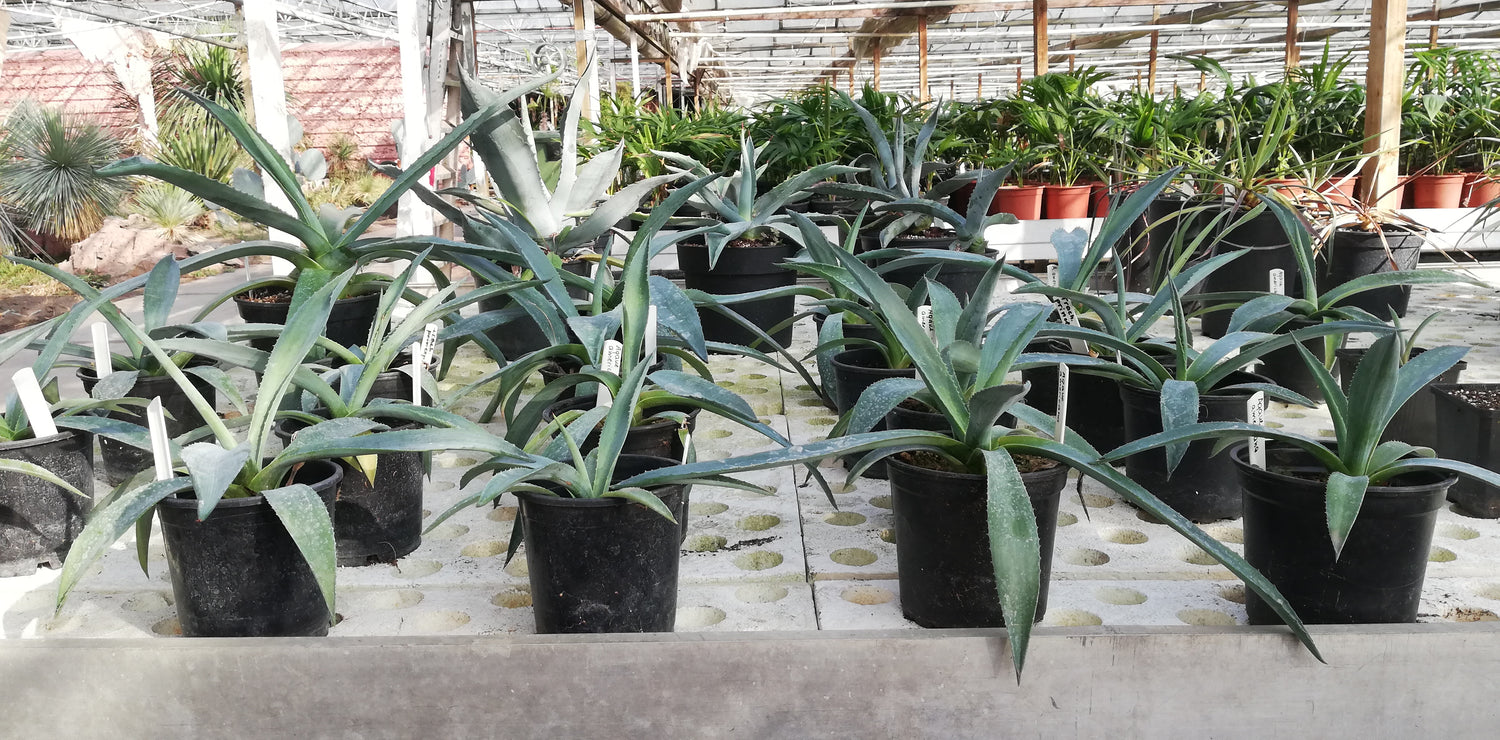About Agave
The Agave, which has also been called the 'century plant', the 'American Aloe' and the 'Century Aloe', obtained it's name from the Greek language. This magnificent and noble plants with their various uses have ensured that the cultivation of agaves has continued for centuries and has assumed in some areas a vitally important economic role, such as the manufacture of rope and related products and of course Tequila. Agave succulents are native America and are tough plants. They form rosettes of elongated leaves which may or may not have serrated margins but are usually tipped with a spine. Many of the leaves are an attractive blue/green colour and some are with cream, white or yellow on the edge.
You can keep Agaves as container plants in house and some species as garden plant. The best way to keep Agaves during the summer is to grow them outside from May through September and place them in a sunny spot where they get maximum sunlight. Strong sunlight will encourage the full colours of the leaves to develop. The plants should be kept almost dry during the winter months, only water them to prevent the roots from completely drying out once a month should be fine. From September through May they should be moved to a south-facing window. Agaves like plenty of food so half strength general-purpose fertilizer should be used at watering time starting from May ones or twice a month. Do not feed the plants from September as this can cause lush growth, which can be fatal during the cold and darker months.
Agave plants are best grown in a terracotta type pot. This type of pot allows good drainage and allows the compost (therefore roots) to breath. The pot should have at least one drainage hole in the base and it should be unglazed. Agave prefer an rich and very free draining compost to grow in. Repotting should be done every other year or every three years, annual potting is not necessary. Replant it using the same mix of compost as it was originally, and use a pot just slightly wider then the width of the plant.
In March when the plant will begin to grow the watering should be increased gradually until late May when the plant should be in full growth. During hot weather you may need to water the plants once a day so long as the plant is actively growing. So long as the plant pot is allowed to drain and not sit in a tray of water. From late September watering should be reduced to force the plant to go in to a state of semi dormancy, by November you should be back in to the winter watering regime.


